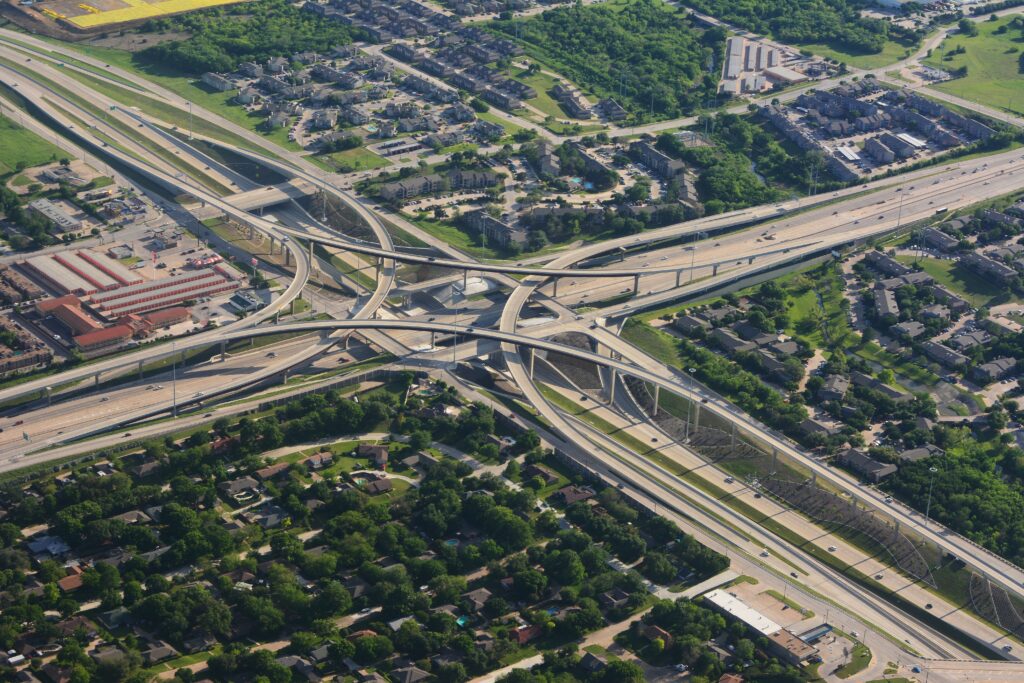Many people complain about toll road fees. The most common comment is, “Why should I have to pay for using a road that was constructed with my tax dollars”? The answer is simple. The fees required to maintain, expand, and construct new roadways throughout the state must come from somewhere and tolled lanes are what public officials believe is fairer than some other type of fee or a tax. The country’s transportation system is extremely costly to maintain because it must continually be expanded, made safer and repaired.
Toll roadway fees provided $22 billion for highway and road construction in 2020. This amount, however, represented only about 11 percent of the total funds devoted to roadway repair throughout the U.S. Transportation projects also receive funding from fuel taxes along with other federal, state, and local revenue resources, but more is needed. The states of Florida, New York, California, and Texas have used numerous tolled lanes as a method of funding transportation projects over the past several years. That’s because those states are among the largest, and they are all experiencing extremely high population growth. The increase in traffic on state roads creates greater needs for repair and expansion and tolled lanes are also critically important for emergencies.

Photo by Irina Blok on Unsplash
The longest toll road in the country is the Gov. Thomas E. Dewey Thruway, which spans 614 miles across the state of New York. Florida has the most toll roads, with more than 719 miles of toll roads in total. The upcoming projects described will all have new or expanded tolled lanes. Without these types of projects, the country would have extreme traffic congestion and thousands of slow-moving vehicles blocking traffic.
The Interstate Bridge Replacement Program, a collaboration between the Oregon and Washington Departments of Transportation, will invest $6 billion to replace a cross-border transportation infrastructure – the I5 Interstate Bridge. The aging structure serves as a critical connection between the two states, and it spans the Columbia River to facilitate local, national, and internal trade. The bridge will be tolled with a variable cost plan set by the state’s transportation commission. The project will be large enough to also include the replacement of the North Portland Harbor Bridge, light-rail extensions from Portland to Vancouver, Washington, and construction of an access bridge connecting Hayden Island to Marine Drive. Solicitations for construction are anticipated in 2024.
A project that started as a long-range transportation plan for the Hillsborough Transportation Planning Organization will launch in Florida. The legislature recently approved $354 million to widen Interstate 275 and add two tolled express lanes in each direction. The project is part of the governor’s plan, Moving Florida Forward, which carries a price tag of $7 billion. The $ 4 billion expansion project is needed because of the state’s unprecedented growth rate.
A few months ago, the California Transportation Commission approved plans for a road widening project on a section of Highway 37 between the city of Vallejo and Sonoma County. A new toll system will be added along the same stretch of road as a part of the project. The cumulative cost has been estimated at $430 million. Transportation officials have obtained $80 million, and the rest of the project will be paid through tolls, which will be approximately $100 million.
Utah’s Department of Transportation will reduce congestion and improve road safety in the Big and Little Cottonwood Canyons near Salt Lake City. An 8-mile-long mountain gondola lift system will be constructed. The project’s overall objective will be implemented in three phases at a cumulative cost of $956 million. Phase one will increase bus service, construct more bus stops and a mobility hub, and implement tolling in both canyons. Tolls will be required for about 50 days of the year during peak hours. Planning costs alone for phase one are estimated to be $240 million. Other costs, except a projection for the gondola in phase three, have not yet been determined. Phase two improvements will include road widening, trailhead parking improvements, and the construction of snow sheds. Road widening will be constructed to prioritize bus lines over personal vehicles. Phase three will focus on constructing the 8-mile-long gondola line at approximately $370 million. Each gondola will hold up to 35 people, and the enclosed cars will arrive in two-minute intervals. UDOT will build a parking structure for 2,500 vehicles for gondola riders.
Last week in Texas, the Department of Transportation approved an agreement with the Harris County Toll Road Authority (HCTRA) to launch an estimated $414 million project to build an interchange connecting the Sam Houston Tollway and the Texas 225 roadway. The HCTRA will build the interchange on state-owned land and the project will improve traffic for trucks leaving the Port of Houston. Currently, trucks leaving the port quickly end up in stop-and-go traffic and slow down all motorists. HCTRA will design, construct, operate, and maintain eight direct connectors to and from the two roadways. That will allow traffic on eastbound and westbound Texas 225 to have direct access to the tollway in both directions and vice versa. The Texas A&M Transportation Institute has noted that the segment of Texas 225 from Loop 610 to the Sam Houston Tollway is one of the most congested truck corridors in the state.
Montgomery County commissioners have approved a plan that outlines a dozen road projects that will be completed with $58 million in funding. The funding was previously raised by toll roads in the county. Records show that Montgomery County had accumulated $150 million from a fee of seven cents per vehicle mile. The $58 million for the road work will come from that revenue. The list’s dozen projects—which will be distributed across the county’s four precincts—will widen roads, add a large ramp to Interstate 45, improve several intersections, and add various lanes along with on and off-ramps. Work in Precinct 1 will cost $9.5 million, Precinct 2 will spend $16.6 million, Precinct 3 will use $19.7 million, and projects in Precinct 4 will require $13 million. Solicitations have not been issued yet for these upcoming projects.
The upcoming year will offer transportation projects of all types and sizes, and many will be funded from revenues that result from tolled roadways. Other revenue options for roadway repair and expansion will likely be considered in 2024 as electric vehicles become more widely accepted. When gasoline taxes are reduced, elected officials will be forced to determine other ways to fund and maintain the country’s transportation system. These examples of upcoming transportation projects are just a small sampling of a thousand new contracting opportunities available for private sector firms in 2024.

As President and CEO of Strategic Partnerships, Inc., Mary Scott Nabers has decades of experience working in the public-private sector. A well-recognized expert in the P3 and government contracting fields, she is often asked to share her industry insights with top publications and through professional speaking engagements. Get an exclusive look at upcoming trends and insider tips from Mary herself on the SPI blog.
Tags: Civil Engineering, Community Development, Economic Growth, environmental impact, Future Of Transportation, Highway Construction, infrastructure development, Infrastructure Investment, Infrastructure Policy, Mary Scott Nabers, Project Management, Public Private Partnership, Public Transport, Regional Development, Road Maintenance, Roadway Expansion, SPI, State Funding, Strategic Partnerships Inc., Sustainable Transport, Toll Roads, Traffic Congestion Solutions, Traffic Management, Transportation Funding, Transportation Innovation, Transportation Projects, transportation trends, Urban Planning






 RSS Feed
RSS Feed